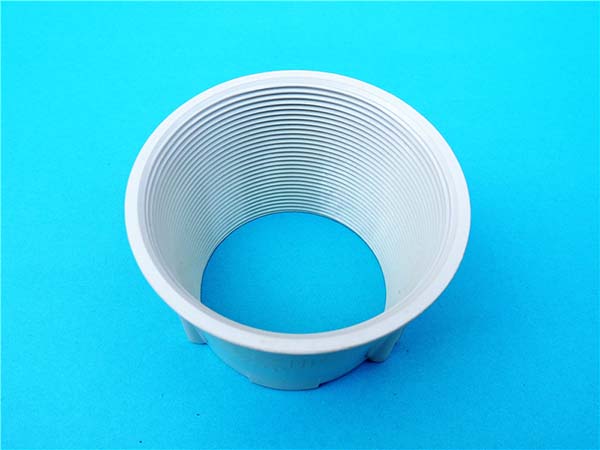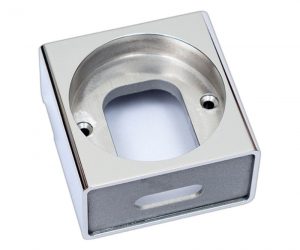Understanding Bakelite Sheets: An Overview
Bakelite sheets, also known as phenolic sheets, are a type of thermosetting plastic material. They are made from a combination of phenol and formaldehyde, which, under heat and pressure during the manufacturing process, form a permanent chemical bond. This results in a material with unique properties that make it highly valuable in various industries.
The Current Landscape of Bakelite Sheet Prices
1. Average Market Prices
The price of bakelite sheets can vary significantly depending on several factors, including quality grade, thickness, size, and the region of purchase. Here is a breakdown of the average market prices for different types of bakelite sheets:
| Quality Grade | Thickness (mm) | Size (mm x mm) | Average Price per Square Meter ($) |
| Standard | 3 | 1000 x 2000 | 50 - 80 |
| Standard | 5 | 1000 x 2000 | 70 - 100 |
| High - Quality | 3 | 1220 x 2440 | 80 - 120 |
| High - Quality | 5 | 1220 x 2440 | 100 - 150 |
For Yigu Technology example, in the electronics industry, where precise electrical insulating properties are required, high - quality bakelite sheets are often preferred. A 3 - mm thick, high - quality bakelite sheet with a size of 1220 x 2440 mm might be priced around \(100 per square meter in a developed market like the United States. In contrast, in some emerging markets, the same sheet could be priced slightly lower, around \)80 per square meter, due to differences in production costs and market competition.
In the mechanical engineering sector, which often uses thicker bakelite sheets for components like gears and bearings, a 5 - mm thick standard - quality bakelite sheet of size 1000 x 2000 mm may cost between \(70 - \)100 per square meter. This price range takes into account factors such as the cost of raw materials (phenol and formaldehyde), manufacturing processes, and any additional treatments or additives used to enhance the mechanical properties of the sheet.
2. Price Fluctuations in Recent Years
Over the past decade, the price of bakelite sheets has experienced notable fluctuations. Let's take a look at a graph representing the price trend of a standard 3 - mm thick bakelite sheet with a common size (1000 x 2000 mm) over the past 10 years:
In the early years, the price was relatively stable. However, around 2015 - 2016, there was a significant increase in the price of bakelite sheets. This was mainly due to a sharp rise in the cost of phenol, one of the key raw materials. Phenol prices increased because of supply - side constraints. Some major phenol - producing plants faced production issues, leading to a reduction in the overall supply of phenol in the market. As a result, bakelite sheet manufacturers had to pay more for the raw material, and these increased costs were passed on to the end - users in the form of higher prices for bakelite sheets.
From 2017 - 2019, the price started to decline gradually. This was a result of several factors. New production technologies were developed that increased the production efficiency of bakelite sheets. Manufacturers were able to produce more sheets with the same amount of raw materials and labor, which helped in reducing the per - unit production cost. Additionally, more competition entered the market as new manufacturers started producing bakelite sheets. This increased competition led to price - cutting strategies to gain market share, further contributing to the price decline.
In the past couple of years, the price has shown some upward pressure again. This is mainly due to the impact of the global supply chain disruptions caused by events like the COVID - 19 pandemic. Transportation costs have increased significantly, making it more expensive to ship raw materials to the manufacturing plants and the finished bakelite sheets to the customers. Also, the cost of energy, which is an important factor in the manufacturing process, has risen in some regions, adding to the overall production cost and thus pushing the price of bakelite sheets upwards.
Factors Influencing Bakelite Sheet Prices
1. Raw Material Costs
The production of bakelite sheets heavily relies on raw materials, with phenol and formaldehyde being the primary components. The cost of these raw materials plays a significant role in determining the final price of bakelite sheets. For Yigu Technology example, phenol is derived from petroleum - based products or coal - tar. Fluctuations in the price of crude oil or coal can directly impact the cost of phenol. When the price of crude oil rises, the cost of producing phenol also increases. Since phenol is a major ingredient in bakelite production, this increase in phenol cost is then passed on to the end - product, leading to a higher price for bakelite sheets.
In addition, formaldehyde is another crucial raw material. Its price can be affected by factors such as the availability of methanol (a key feedstock for formaldehyde production), energy costs during its manufacturing process, and market demand for formaldehyde from other industries. If there is a shortage of methanol in the market, the price of formaldehyde will likely increase, further contributing to the overall cost of bakelite sheets. A study by the Chemical Market Research Association showed that a 10% increase in the price of phenol and formaldehyde can lead to an approximate 8 - 10% increase in the cost of bakelite sheets, assuming other factors remain constant.
2. Manufacturing Process Complexity
The manufacturing process of bakelite sheets can vary in complexity, and this has a direct impact on the cost and price. There are two main types of manufacturing processes: the traditional process and more advanced, specialized processes.
The traditional manufacturing process involves mixing phenol and formaldehyde in a reactor, followed by polymerization under heat and pressure. This basic process is relatively straightforward and is used for producing standard - grade bakelite sheets. The cost associated with this process is relatively lower as it requires less sophisticated equipment and fewer processing steps. For Yigu Technology example, a manufacturer using the traditional process can produce a standard 3 - mm thick bakelite sheet at a cost of around \(40 - \)60 per square meter, excluding raw material costs.
On the other hand, for high - quality bakelite sheets with specific properties such as enhanced electrical insulation or extreme heat resistance, more complex manufacturing processes are employed. These may include the use of special additives, precise control over the polymerization reaction, and additional post - processing treatments. For instance, to produce a bakelite sheet with extremely high - temperature resistance for use in aerospace applications, the manufacturing process may involve multiple curing stages, the addition of high - performance fillers, and strict quality control measures. The cost of producing such a sheet can be significantly higher, perhaps in the range of \(150 - \)250 per square meter, due to the increased complexity of the process, higher - cost equipment, and more expensive additives.
3. Quality and Grade Differentials
Bakelite sheets come in different quality grades, each with distinct performance characteristics and corresponding price ranges.
Low - grade bakelite sheets are suitable for applications where the requirements are not very stringent. These sheets may have relatively lower mechanical strength, less precise electrical insulating properties, and may not perform as well under harsh environmental conditions. For example, in some simple consumer goods like non - critical electrical enclosures for small household appliances, low - grade bakelite sheets can be used. They are priced more affordably, usually in the range of \(30 - \)50 per square meter. However, they may not be suitable for industrial or high - performance applications.
Medium - grade bakelite sheets offer better overall performance. They have improved mechanical properties, more consistent electrical insulation, and can withstand moderate environmental stress. In the electronics industry, for components that do not require the highest level of performance but still need reliable electrical insulation, medium - grade bakelite sheets are often used. Their price typically ranges from \(50 - \)80 per square meter.
High - grade bakelite sheets are engineered for applications with the most demanding requirements. They have excellent mechanical strength, superior electrical insulating properties, and high resistance to heat, chemicals, and moisture. In the automotive industry, for high - voltage electrical components, and in the aerospace industry, high - grade bakelite sheets are essential. These sheets can cost upwards of $80 per square meter, depending on their specific properties and the manufacturing process involved. When choosing a bakelite sheet, users should carefully assess their requirements. If the application is for a short - term project or a non - critical component, a low - grade sheet may be sufficient, saving costs. However, for long - term, high - performance applications, investing in a high - grade bakelite sheet is a more prudent choice, as it will ensure better performance and durability.
Frequently Asked Questions about Bakelite Sheets
What is a bakelite sheet used for?
Bakelite sheets have a wide range of applications. In the electrical industry, they are primarily used as electrical insulators. For Yigu Technology example, in switchgear, bakelite sheets are used to separate electrical components and prevent the flow of electricity to unwanted areas, ensuring the safe operation of electrical systems. In mechanical engineering, they are utilized for manufacturing mechanical parts like gears and bearings. Their high mechanical strength allows them to withstand the mechanical stresses and frictions during operation, providing long - lasting performance. Additionally, bakelite sheets can be found in the production of handles for various tools due to their heat - resistance and good grip - providing properties.
Is bakelite sheet waterproof?
Bakelite sheets have moderate water - resistant properties. They are not completely waterproof in the sense that they can withstand short - term exposure to moisture and humidity. However, if they are submerged in water for an extended period or exposed to high - humidity environments continuously, water can gradually penetrate the material, which may lead to a decrease in some of its properties such as electrical insulation and mechanical strength over time. In applications where water resistance is a critical factor, additional waterproof coatings or treatments may be applied to bakelite sheets to enhance their ability to resist water ingress. For normal indoor electrical and mechanical applications with occasional exposure to low - humidity conditions, bakelite sheets can perform well without special waterproofing measures.
What is the size of a bakelite sheet?
Commonly available bakelite sheet sizes include 1000 x 2000 mm and 1220 x 2440 mm. The thickness can vary, with standard thicknesses such as 3 mm, 5 mm, 6 mm, 8 mm, and 10 mm being widely used in different industries. For example, in the electronics industry, thinner sheets like 3 - mm thick ones are often used for printed circuit board insulation. Thicker sheets, such as 8 - 10 mm, are more suitable for mechanical components that require higher strength. If specific projects have unique size requirements, many manufacturers offer customization services. Customers can communicate their desired dimensions, and the manufacturer will produce bakelite sheets according to those specifications, although custom - sized sheets may be more expensive due to the additional production efforts involved.



